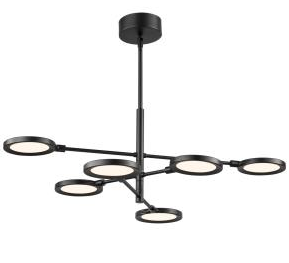Architects, interior decorators, and lighting designers are becoming more and more aware of the impact of lighting on the observer’s health and sensory impression of their surroundings. The prime goal of the top decorative lighting project is to always be able to ensure visual comfort and ideal lighting through the use of the best visual comfort modern collection in restaurants, hotels, private residences, offices, and shops.

The high-end design calls for special consideration, assessing numerous factors, and adhering to certain design procedures. All this is done to obtain final work with powerful technical and stylistic content while guaranteeing maximum visibility in every nook and cranny of the relevant area and making each context aesthetically eye-catching.
Look at the following most important things to consider for your project when it comes to visual comfort & lighting:
Consider Natural Light in Mind:
Prior to doing anything else, always assess the location’s inherent luminous potential and sunshine access points like windows and balconies.
Both insufficient and excessive lighting can impair vision. Stress and weariness can be brought on by abrupt changes in illumination levels or by a stark contrast in light, which is typically perceived as glare. Thus, it is best to assess this factor before choosing the lighting design most appropriate for the situation.
Natural light’s variable and dynamic behavior can greatly impact our sleep, wakefulness, organ function, heart rate, and mental & physical wellness.
It is crucial to fully utilize the available sunlight access points when building a decorative lighting system to give users the greatest natural light. Additionally, the difference in space use during the day should be taken into account depending on the individual function of each area.
Draw out The Distribution of Light:
The second stage entails using a photometer to draw out the distribution of light and calculation of luminance & illuminance.
The amount of light flux that is intercepted by a surface is measured by illuminance, which is represented in lux and independent of the observer’s position. Illuminance is determined by the relationship between luminous flux emitted by a specific source and the accepting surface.
Contrarily, brightness is a subjective measurement that depends on the observer’s position. It is in accordance with the quantity of light that reaches our eyes.
The measurement unit, cd/m2, also known as nit, refers to various light intensities per unit of surface that are either emitted or reflected by the surfaces that are all around us.
Basically, it explains how light brightness affects visual perceptions & psychological sensations. By evaluating it, we can determine the contrast between the light & glow and determine if the light is depressed evenly or originates from a single source.
Figure out the Window Floor Surface Ratio:
The window-to-floor surface ratio can be calculated by dividing the opening’s total area by the entire area of space surrounding them. This factor aids in determining the optimal amount of apertures for each region of our project.
Define the Minimum Amount of Visible Light That Must Flow Through the Glass
As mentioned above, Visible Light Transmission (VLT), which refers to the quantity of visible light that goes through the glass, must be linked with the interaction between the openings & space.
A glass surface with a fifty percent VLT lets through fifty percent of the light and blocks the other fifty percent. With this, you may choose to include big apertures in the design while still regulating the amount of light that comes through and adding UV and glare protection.
All of these analyses must be taken into account when calculating other important factors, U value and solar heat gain coefficient. Local guidelines must be taken into account, along with the technical requirements of the selected window types.
Additionally, it is crucial to assess the exterior views, taking into account qualitative characteristics like the surrounding urban or natural scene or other objects that could be seen through each transparent surface. Think about implementing sunlight control systems or other techniques that affect how comfortable the interiors of the project you are working on look.
Skillfully Combine Artificial & Natural Lighting Sources
The most effective decorative lighting designs combine and interact with natural and artificial light. The overall lighting composition will be modern and stylish without being overstated or draining on the eyes. You can buy a top-rated visual comfort studio collection online and properly install it for the best results.
Select Dimmable Products
Fixing a dimmer switch gives you the ultimate benefit of changing the source’s light voltage according to the time of day and creating the ideal ambience at all times. Lighting options that can be dimmed are incredibly secure and effective. Furthermore, installing a dimmer doesn’t require any additional wiring. The ideal combination for any lighting design project is visual comfort & optimal illumination.
Here we highlight the key factors to consider while creating a project with visual comfort and ideal lighting in various places. If you want to purchase lighting products, you can visit Starlight Lighting, which provides a stunning visual comfort studio collection, including lighting and a visual comfort fan collection. Shop with us anytime to get the best visual comfort modern collection!

